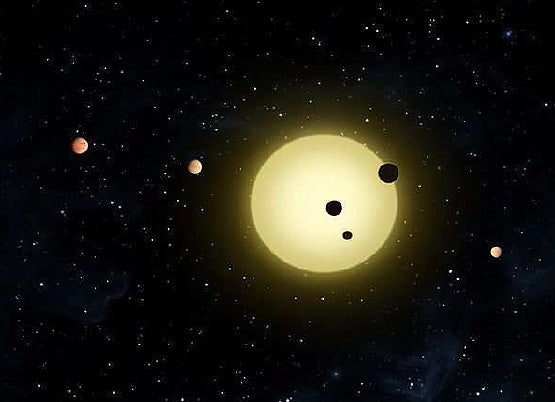|
March 8, 2011
The search for planets around other stars - a talk at Stanford
Natalie Batalha, a key scientist in the search for Earth-like planets orbiting distant stars, will talk about the quest Thursday evening as the speaker for the annual Bunyan Lecture, presented by the Stanford Astronomy Program. The 7:30 p.m. talk is free and open to the public.
By Dan Stober

"There is awe in the discovery of new worlds," says Natalie Batalha, an astrophysicist at San Jose State University who will present the annual Bunyan Lecture at Stanford.
Is there life elsewhere in space?
Two years in, NASA's search for Earth-like planets circling far-flung stars is galloping ahead. The Kepler telescope, in orbit around Earth, has discovered 15 stars with planets of their own.
And the checklist of stars that might harbor planets has grown to 1,235.
But the quest is still on for the perfect planet, the gem that could potentially sustain life.
Natalie Batalha, a key scientist in the project, says that someday, in the very distant future, our descendants may venture to such a planet.
"Somehow, this really taps into something fundamental in our nature," Batalha said in an interview. "It's the seed of exploration in all of us."
Batalha, an astrophysicist at San Jose State University, is the deputy science leader of the Kepler team. She will explain this galactic search during the 28th Annual Bunyan Lecture, presented by the Stanford Astronomy Program. The lecture, which is free and open to the public, is scheduled for Thursday, March 10, at 7:30 p.m. in Braun Auditorium, in the Mudd Chemistry Building, 333 Campus Drive.
NASA's planet-hunting Kepler stares out into a slice of the Milky Way, like a video camera looking at 156,000 stars simultaneously. Its instruments search for the telltale temporary dimness created when an orbiting planet passes in front of its star, blocking a portion of the light we see from Earth.
Some of Kepler's discovered planets are too near a hot star to support life; others are frigid, too far away. The goal is to find planets in the habitable zone, where the temperature will permit the presence of liquid water and perhaps life.
But while the ultimate quest is the discovery of life afar, the more immediate goal is simply finding planets. For that, Kepler gets some help from the Keck Observatory in Hawaii. When Kepler finds a winking star, Keck can focus in to gather precise data.
A star obviously has a gravitational effect on a planet orbiting around it, but it works the other way as well: The gravity of the planet causes the star to wobble slightly. That wobble pushes the star ever so slightly closer to Earth, and then away, a movement that can be detected by tiny changes in the color of the star's light the Doppler Effect.
"The dimming of light tells us something about the size of the planet, and the Doppler shift tells us something about the mass of the planet," Batalha said.
As young students learn in physics class, if you know the mass and volume of an object including planets you can then compute the density. This led researchers to conclude that one recently discovered planet is so dense that it should be known as the rocky planet.
"There is awe in the discovery of new worlds," Batalha said. "I think it's really important for the public to take this journey with us, and learn what we're learning. We think this is something important for humanity."
-30-
|